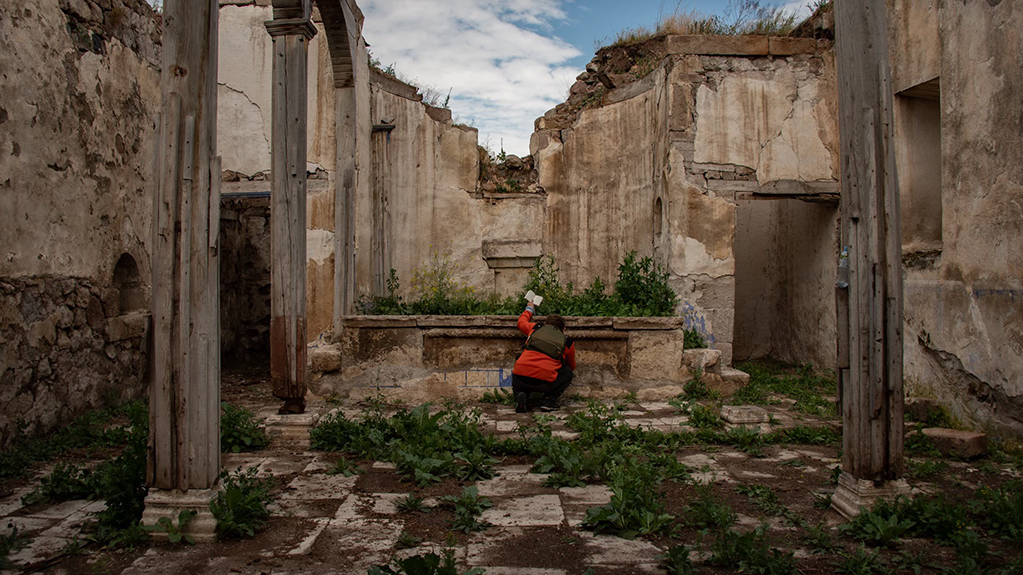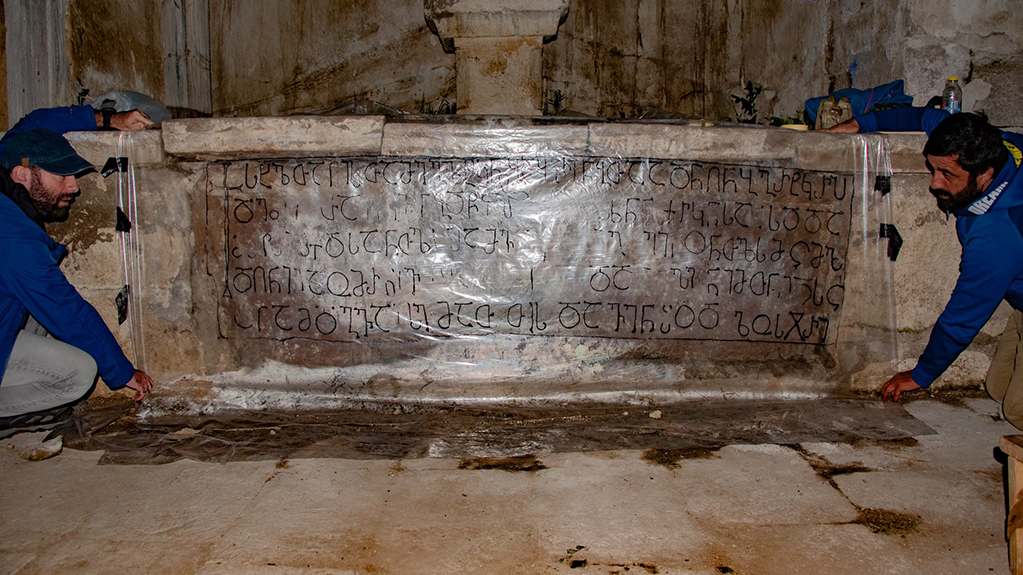In the village of Agana, located in the Akhalkalaki municipality, a stone dated 984 was found in the 19th-century church of the Armenian community. The stone bears a Georgian inscription written in the Asomtavruli script, mentioning King Bagrat III Kurapalates and John the Baptist. This 10th-century stone is placed in the eastern part of the church, in front of the altar pulpit.
News
Levan Tsikarishvili, a member of the expedition conducted by the Research Center, states that the main reason the inscription had not been discovered before was that it was covered with plaster.
"In the 1970s, an inscription dating back to the 7th-8th centuries was seen on the outside of the same temple. It mentioned 'Acana' (probably an old name for Agana) and a bishop. In the '70s, the inscription on the inner side of the temple was overlooked by scientists, likely due to two factors: the temple was in very poor condition and, as confirmed by locals, it was closed. The second most important factor is that the inscription was covered with plaster. Over time, rain damaged the front layer of plaster. We found that the plaster had actually fallen off, revealing fragments of the inscription," says the researcher.

The stone was originally intended to be placed above the church door. As Levan Tsikarishvili explains, such important inscriptions were typically positioned at the top of doors.
"The author of this inscription was likely a local feudal lord. We are in the process of identifying his name. The inscription mentions Bagrat III Kurapalates, and the middle part displays the koronicon (a form of date reference at that time) 984. Bagrat did not hold the title of Kurapalates in that year. Generally, the koronicon is mentioned at the end of the inscription. Therefore, 984 was probably the date when the construction of the temple began, and the construction was completed when Bagrat had already assumed the title of Kurapalates. 'The Baptist' is clearly mentioned, suggesting that the temple was named in honour of the Baptist," says Levan Tsikarishvili.
The inscription is incomplete, as about 50 cm of the stone is missing. The members of the Research Center believe that the stone was repurposed, which is why it is placed near the pulpit. They speculate that by the 19th century when the Armenian community built a new church, the old temple was likely destroyed.
The Agana Church was granted cultural heritage status in 2012, but it remains without a roof and is deteriorating. The Ministry of Culture and its Agency for the Protection of Cultural Heritage have yet to respond to the discovery of the inscription in the temple.















